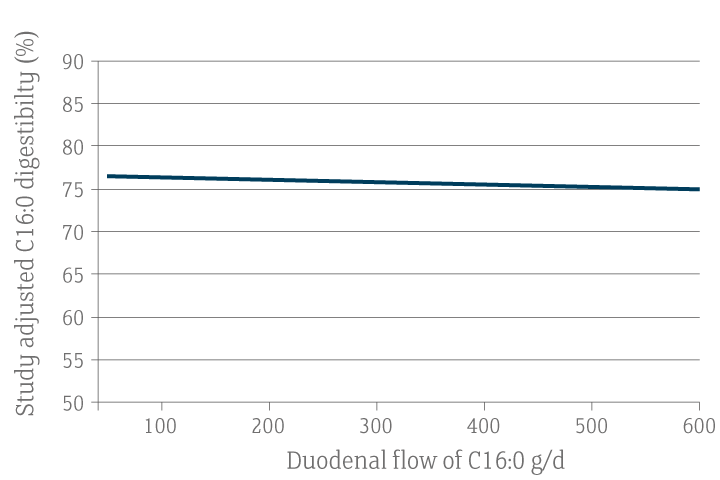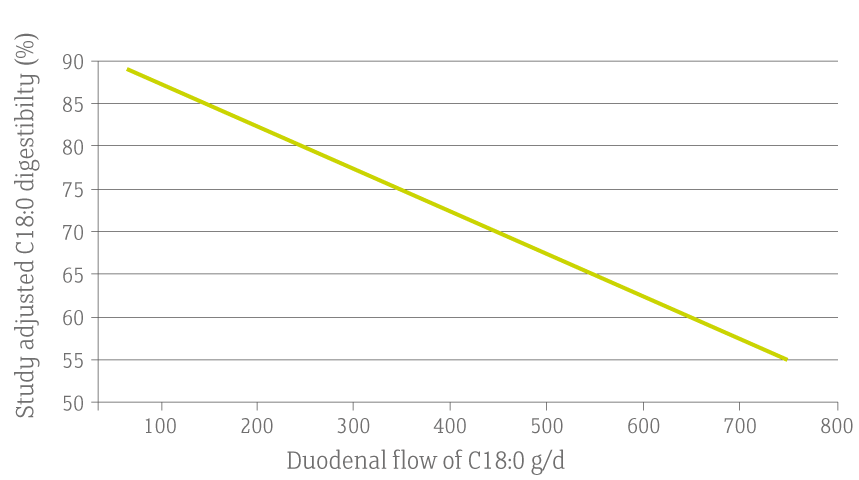Individual fatty acid digestibility - ruminants
In general, fatty acid digestibility in ruminant animal’s decreases with saturation i.e. unsaturated fatty acids tend to have higher digestibility than saturated fatty acids. Individual fatty acids such as oleic acid can help formation of micelles and improve digestibility of fat due to its ability to function as an amphiphilic agent.
Individual fatty acid digestibility data were reported by Lock et al. (2006) following analyses of 20 dairy cow digestion studies measuring digestibility between the duodenum and ileum or duodenum to faeces (Table 1).
Table 1 Digestibility of fatty acids
| Fatty acid | Digestibility (%) |
| Palmitic acid (C16:0) | 75 |
| Stearic acid (C18:0) | 72 |
| Oleic acid (C18:1) | 80 |
| Linoleic acid (C18:2) | 78 |
| Linolenic acid (C18:3) | 77 |
| Total | 74 |
Digestibility of fatty acids is also influenced by quantity of particular fatty acids leaving the duodenum. Boerman et al. (2015) reported that digestibility of C16:0 was not significantly affected by flow of C16:0 through the duodenum (Figure 1), whereas as flow of C18:0 through the duodenum increased, digestibility of C18:0 linearly decreased (Figure 2). Similarly, increased duodenal flow of C18:0 also resulted in the reduction in digestibility of other fatty acids.
Figure 1 Relationship between study-adjusted C16:0 intestinal digestibilty and duodenal flow of C16:0

Figure 2 Relationship between study-adjusted C18:0 intestinal digestibilty and duodenal flow of C18:0
Hence, digestibility of individual fatty acids can differ and affect the digestibility of other fatty acids in the diet.